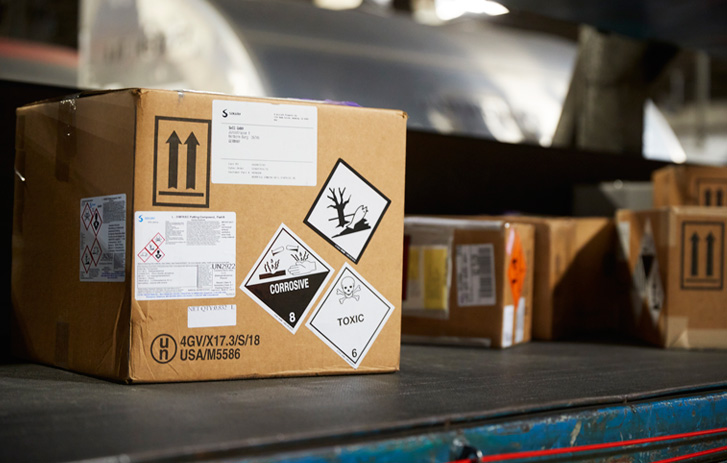Shipping goods can be a minefield of potential hazards—especially if you’re in the business of transporting items classified as ‘dangerous goods.’
The stakes are high, the regulations are binding, and one misstep can lead to disastrous consequences. That’s where dangerous goods boxes come into play. To ensure you’re taking the right steps in secure shipping, here’s a breakdown of why these boxes are crucial to your shipping strategy.
Introduction: The Packaging Power Play
Shipping is a delicate dance. It’s not just about getting your products from point A to point B. It’s about protecting them until they get there. With dangerous goods, that mission takes on a whole new level of complexity. If you’re not familiar with them, dangerous goods include items that may pose risks to health, safety, property, or the environment when transported.
Understanding Dangerous Goods
What makes a good ‘dangerous’ for shipping? The International Air Transport Association (IATA) and the International Maritime Dangerous Goods (IMDG) provide detailed lists, but generally speaking, dangerous goods encompass a wide range of products such as chemicals, solvents, gases, and even everyday-use items, like batteries and perfumes.
The Risks: Consequences of Improperly Handled Dangerous Goods
Not abiding by the rules when packing and transporting dangerous goods can have serious ramifications — from fines and shipping bans to legal troubles and, in the worst-case scenario, catastrophic outcomes like explosions or injuries.
The Solution: Introducing Dangerous Goods Boxes
This is where Dangerous Goods Boxes step onto the scene. DG boxes are specially designed containers that meet stringent regulations for the safe transport of hazardous materials across different modes of transport.
Features and Benefits: How Dangerous Goods Boxes Protect Your Shipments
The benefits of using dangerous goods boxes are clear:
- Safety: Boxes are constructed to shield against leaks, breakage, and chemical reactions.
- Compliance: They are rigorously tested and approved to ensure your compliance with all shipping regulations.
- Convenience: Boxes are designed to be user-friendly, often coming with kits for easier packing and handling.
- Durability: With reinforced walls and tamper-evident features, they ensure your goods arrive without tampering or damage.
Types of Dangerous Goods Boxes
There is a plethora of dangerous goods boxes suited for various materials, vessel sizes, and regulations. Some common types include:
- Fiberboard Boxes: Perfect for dry materials and can be easily customized for different sizes.
- Metal Drums: Often used for highly corrosive substances.
- Combo Packaging: A multi-layered system using different materials to provide a failsafe combination of protection and containment.
Where to Source
When it comes to sourcing dangerous goods boxes, there are a few factors to keep in mind:
- Regulatory Knowledge: The supplier must have a deep understanding of the regulations surrounding dangerous goods packaging.
- Quality Certifications: Check for certifications like UN, IATA, or DOT to ensure the packaging meets international standards.
- Customisation: The ability to tailor the packaging to your specific products is a must.
Implementation Best Practices: Ensuring Safe and Compliant Packaging
Adhering to best practices is crucial when implementing dangerous goods packaging into your shipping process. Here are key strategies to ensure safety and compliance:
- Thorough Training: Ensure all personnel involved in the packaging and shipping of dangerous goods are trained in IATA or IMDG guidelines, as appropriate.
- Regular Audits: Conduct audits of packaging processes to ensure ongoing compliance with regulations and to identify any areas for improvement.
- Documentation: Maintain comprehensive records of all shipments, including details of the packaging used, certifications, and training logs.
Addressing Common Issues in Dangerous Goods Shipping
Despite the best planning, companies can encounter challenges when shipping dangerous goods. Common issues include:
- Compliance Updates: Staying updated with the frequent changes in regulations can be daunting but is necessary for legal compliance.
- Cost Management: Balancing the cost of high-quality packaging while keeping shipping prices competitive is often challenging.
- Global Variations: Understanding and complying with the variations in regulations across different countries can complicate international shipments.
Conclusion
You cannot afford to overlook the importance of proper packaging when it comes to shipping dangerous goods. Not only do dangerous goods boxes provide the needed protection for your items, but they also offer peace of mind and the freedom to focus on growing your business, safe in the knowledge that your shipments are arriving intact and compliant. Don’t cut corners in the realm of safety — invest in the right packaging solutions today.



